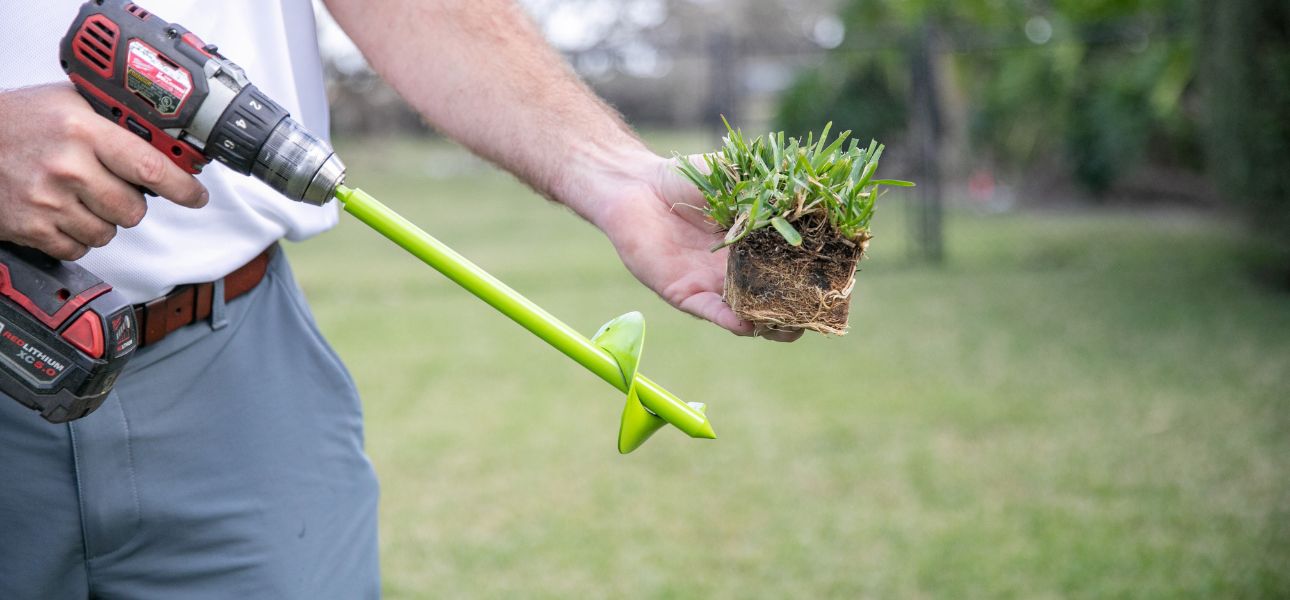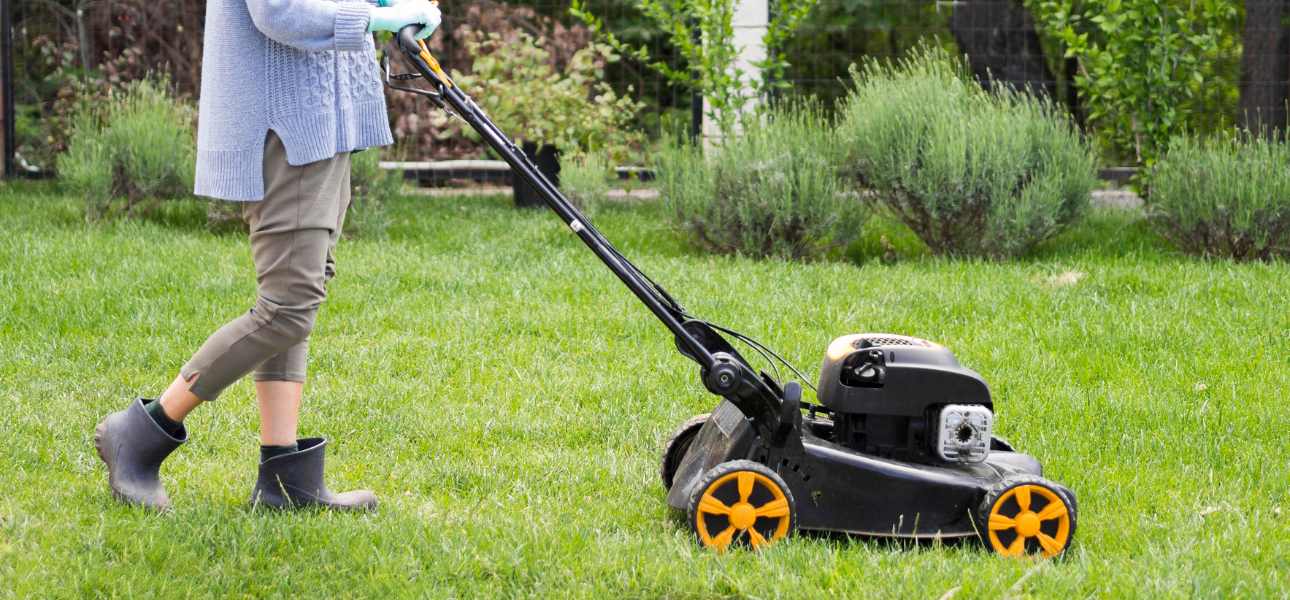Your Guide to Sustainable Lawn Care Practices

Every spring weekend, the neighborhood resonates with the steady hum of lawnmowers as homeowners diligently tend to their lawns.
While everyone loves their lawns, the escalating effects of climate change—heightened heat and drought conditions—have raised environmental concerns regarding traditional lawn care practices. Sustaining a lush lawn requires considerable water and maintenance efforts year-round.
As homeowners become increasingly aware of the role of their landscape in the wider ecosystem, there is a growing trend toward sustainable and eco-friendly lawn care practices.
What is Sustainable Lawn Care?
When you read the words eco-friendly or sustainable, you probably think of eliminating synthetic chemicals entirely to maintain a healthy, pest-free lawn. However, sustainable lawn care doesn't mean giving up your green lawn or avoiding synthetic fertilizer in favor of organic or natural alternatives. Instead, it underscores the importance of good soil quality in cultivating an environmentally friendly lawn or considering sustainable alternatives like grass plugs, which are pre-grown to withstand environmental stresses naturally and establish a low-maintenance lawn.

5 Easy Steps for Sustainable Lawn Maintenance
Sustainable lawn care begins with nurturing healthy soil to provide optimal conditions for plant growth. It includes adhering to proper mowing practices to encourage a stronger, deeper root system, watering deeply but less often to increase drought tolerance, using appropriate fertilizers when necessary, and supplementing with organic matter to replenish nutrients in the soil.
Improve Soil Structure
Good soil is the foundation of a healthy lawn, creating an optimal environment for plant growth. It should have a loose, crumbly texture to allow roots to easily penetrate and access water and nutrients. This texture also increases soil aeration, preventing compaction and balancing soil drainage and water retention.
Moreover, good soil should maintain a balanced pH level, which for most warm-season grasses is generally between 5.5 and 7.0. It should also contain sufficient organic matter and a diverse array of soil microbes to break it down into nutrients available to plants. Finally, healthy soil should also be well-balanced in nutrients, which increases its resistance to soilborne plant diseases.
A soil test is a valuable tool for assessing soil quality. You can conduct a test yourself with a kit from local garden centers to immediately determine its pH levels. Alternatively, you can send samples to a testing lab for a more comprehensive analysis. Soil test results may include nutrient levels and recommendations for fertilizer to balance deficiencies and amendments to improve soil structure tailored to your grass type.
Mow Properly
Proper mowing practices focus on giving your grass a competitive edge against weeds and increasing its resistance to pests and disease. Below are some mowing tips to maintain a healthier lawn––sustainably.
- Avoid mowing too low: It can stress the grass and weaken its root system, making it more susceptible to damage. Mowing too low can also lead to scalping, which exposes the crowns to extreme weather conditions, lawn pests, and diseases
- Understand your grass type: Different grass varieties have different growth habits and requirements. For example, warm-season grasses like Bermuda, Zoysia, and St. Augustine are usually maintained from 1-3 inches.
- Mow at the highest end of the recommended cutting height: It encourages deeper root growth in the grass, increasing its resistance to drought. Longer grass also shades the soil, which keeps weeds from growing and keeps the soil cooler, thus reducing water loss due to evaporation.
- Follow the one-third rule: Never remove over one-third of the grass blade length at a time. For example, if you aim to keep your grass at three inches, mow it when it reaches about 4.5 inches tall.
- Adjust mowing based on the weather: Warm-season grasses grow most actively from late spring through early fall, so expect to mow more often. However, as temperatures drop and the grass enters dormancy, growth may slow down in late fall, requiring less frequent or zero mowing.
- Avoid cutting wet grass: Cutting grass immediately after irrigation or rainfall can result in an uneven cut, clumping, and damage to the grass blades, potentially leading to disease and pest infestations. However, an exception is during periods of prolonged rainfall, when it's preferable to mow wet grass rather than let it grow too long while waiting for it to dry out.
- Keep the mower blades sharp: Dull blades can tear the grass instead of cutting it cleanly, leading to ragged tips that increase water loss and make the grass more vulnerable to disease. This is especially important when mowing wet grass.
- Mow in alternate directions each time. This will keep the grass height even and promote upright growth. It is particularly useful when you're cutting the grass higher.
- Mulch grass clippings: Grass clippings left on the lawn recycle nutrients and organic matter into the soil. Using them as mulch also aids in water retention. Use a mulching mower to break up the clippings finely so they can decompose quickly.

Water Strategically
Landscape irrigation in the US accounts for about one-third of all residential water use, or more than 7 billion gallons per day. Watering your lawn efficiently allows you to conserve water, save on energy costs, and maintain a healthier lawn.
Overwatering and underwatering can equally harm your lawn. Watering too much and too often creates favorable conditions for pests and fungal diseases. Meanwhile, watering too little can lead to dormancy, which, when prolonged, can result in weakened roots and permanent damage.
Best watering practices call for irrigating your lawn in the early morning––the cooler temperatures allow water to reach the grass roots before evaporating in the heat of the day. Additionally, water less frequently but more deeply to encourage deeper and denser root growth.
Warm-season grasses are generally more drought-tolerant than cool-season grasses and can thrive with about an inch of water per week, including rainfall. However, make sure to adjust your watering schedule to match the specific needs of your lawn based on the grass type and weather conditions.
For example, warm-season grass varieties like Bermuda, St. Augustine, and Zoysia experience peak growth from late spring through summer. They may become dormant or grow more slowly when temperatures drop below 60 degrees F in the fall. During dormancy, your green grass may turn brown and can go without water for an extended period. However, even when dormant, grass still needs to be irrigated, although not as often as when it is actively growing. Water the grass to a depth of half an inch every four weeks to keep the crown and roots moist.
Apply Fertilizer As Necessary
Fertilizing your soil ensures it has the essential nutrients, mainly nitrogen, phosphorus, and potassium, to support healthy plant growth. While both organic and chemical fertilizers supply these nutrients, there are key differences, such as how they deliver them.
Organic fertilizer, derived from composted animal manures, plant debris, and other animal sources like bone meal and blood meal, releases nutrients more slowly. Although it provides a steady supply of nutrients for an extended period, the slower release rate can delay nutrient availability. Organic matter also tends to be bulkier than commercial fertilizers, meaning you need more to deliver the same amount of nutrients as synthetic counterparts.
Meanwhile, synthetic fertilizers offer immediate nutrient availability, leading to faster growth and greener, healthier lawns. However, the downside is that they are at a greater risk of nutrient leaching and runoff due to overapplication or using the wrong type of fertilizer, leading to environmental concerns.
The good news is that many synthetic fertilizers available today are designed to address these issues. NutriPod® is a lawn fertilizer pod that is worked into the soil, where it releases nutrients gradually and steadily. This method ensures that the nutrients are available to support grass plugs as they establish into their new environment, without the risks of leaching and runoff associated with traditional fertilizers.

Aerating and Dethatching
Aerating is the process of perforating the soil with small holes or removing soil plugs from the ground with a grass plug tool to allow air, water, and nutrients to penetrate the soil and reach the roots. It also alleviates soil compaction, improving drainage and encouraging the roots to grow deep, thus producing a stronger, denser lawn.
Dethatching is essential for maintaining a healthy lawn. Thatch, which consists of dead grass, roots, and debris, builds up on the soil surface over time. While some thatch is beneficial, as it helps retain soil moisture and protects against temperature fluctuations, a layer that is too thick, exceeding half an inch, can prevent the roots from accessing water, air, and nutrients. Your lawn can benefit from dethatching when it feels bouncy, and the grass looks dry despite watering adequately.
Overall, these efforts contribute to a sustainable lawn by improving drainage and maximizing nutrient absorption and water penetration.
Should You Start a New Lawn?
Starting fresh might be a better option when dealing with a poor-quality lawn. Re-establishing your lawn can start using a non-selective herbicide to remove existing vegetation. This approach offers benefits such as the opportunity to select native plants that are well-adapted to your local climate. They often demand less water, fertilizer, and overall maintenance than native varieties.
Establishing a lawn from grass plugs also has its advantages. These plugs are pre-grown, thus requiring less water and nutrition than grass seed. Additionally, they tend to be more resilient against pests, diseases, and weeds, reducing the need for chemical treatments.
Moreover, a new lawn allows you to amend the soil with organic matter, which can significantly improve soil structure, water retention, and nutrient availability. Adding organic matter to the soil before planting is more effective than top-dressing an existing lawn with compost, as it enables you to incorporate organic materials well into the soil, promoting long-term soil health and sustainability. Finally, any nutrient deficiencies identified in a soil test can be corrected before planting grass plugs, ensuring a healthy foundation for your new lawn.

Takeaway
Creating a healthy, sustainable lawn requires a multi-step approach that includes proper lawn preparation, selecting the right type of grass, and implementing proper maintenance practices. These steps work together to create a lawn resilient to environmental stresses such as pests, infections, and harsh weather conditions.
Choosing SodPods® grass plugs can further contribute to your efforts in creating a sustainable lawn. SodPods® offers high-quality warm-season grass plugs specifically cultivated to thrive in Florida's warm, humid climate.
Explore our selection of SodPods® grass plugs for sale on our website today.


